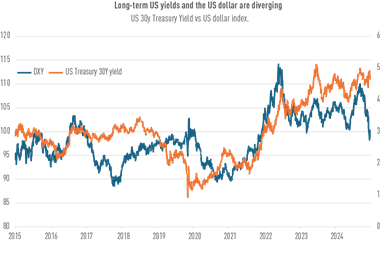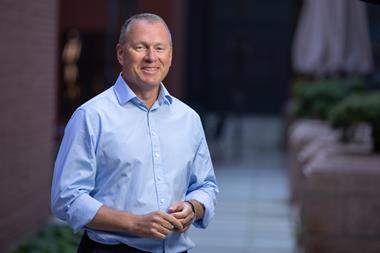Twenty one Australian superannuation funds have now signed the UN Principles of Responsible Investment (‘UN PRI’). An even longer list of investment managers has also signed up. Signing, though, is the easy part. Satisfying the commitments made by signing - or ‘walking the talk’ - is both harder and more important.
First some background. Superannuation fund trustees in Australia are bound both by general law and by statute to pursue the best interests of their members. They must also act with the care, skill and diligence of a prudent business person and respect the ‘sole purpose’ (the provision of retirement benefits to members) of the funds. As recent research has demonstrated, none of these legal requirements necessarily precludes Responsible Investing (in the specialised way in which that term has come to be used to describe attention to Environmental, Social and Governance, ‘ESG’ issues). However, they don’t necessarily require that trustees take a Responsible Investing approach either. Whether Responsible Investing is appropriate for any particular fund, or for some of the options offered by the fund, is a matter for each trustee to determine, bearing in mind the unique needs and circumstances of that fund.
In Australia, Section 1013DA of the Corporations Act adds a further wrinkle, requiring the disclosure of “the extent to which labour standards or environmental, social or ethical considerations are taken into account [in the investment process]” in the Product Disclosure Statements (PDSs) fund trustees issue to current and prospective members. This provision is similar to that required pursuant to 35(3)(f) of the 1995 Pensions Act in the UK. Again, this provision doesn’t require consideration of ESG issues by trustees, but it does require trustees to communicate whether or not such issues are considered in the fund’s investment process.
The UN PRI
There has been considerable community pressure in Australia for superannuation funds, especially those in the industry fund sector, to demonstrate commitment to Responsible (or its sibling ‘Sustainable’) Investing. The UN PRI is perhaps the most visible sign of commitment to Responsible Investing. It is therefore worth quickly reviewing what the UN PRI declarations say, so that it is clear what trustees are committing to when they become signatories. (In slightly edited form) the declarations read:
1 We will incorporate ESG issues into investment analysis and decision-making processes.
2 We will be active owners and incorporate ESG issues into our ownership policies and practices.
3 We will seek appropriate disclosure on ESG issues by the entities in which we invest.
4 We will promote acceptance and implementation of the Principles within the investment industry.
5 We will work together to enhance our effectiveness in implementing the Principles.
6 We will each report on our activities and progress towards implementing the Principles.
The declarations are strong and unequivocal. The explanatory text accompanying the declarations makes it clear that the Principles focus on factors that affect the financial well-being of stakeholders, an important issue for fiduciaries required to act in the best interests of members. Note though, that whilst in signing the UN PRI, trustees are not committing to implement specific strategies, their signatures are not without legal import.
There are a number of issues that emerge:
What are the consequences of non-compliance? There are no formal sanctions for signatories who breach the UN PRI. However that is only part of the story. Section 1013DA comes into play also. A little ‘desk research’ indicates that around half of the 21 signatories (10 of the 19 with PDSs) don’t disclose that they have signed the UN PRI in their PDS. Indeed a number still include statements in their PDSs to the effect that ESG factors are not taken into account in their investment strategies. Noteworthy amongst these are the following (quoted from PDSs of UN PRI signatories available on funds’ websites as at 30 October 2008):
“The Trustee does not have a predetermined view as to whether it will take the above [ESG] matters into consideration in making investment decisions affecting the investments in the future.”
“We do not necessarily take into account labour standards or environmental, social or ethical considerations for the purpose of selecting and retaining investment managers. To our knowledge, our chosen investment managers also do not take these issues into account either”
(These are not unique; most of the PDSs viewed contain similar statements.) It is hard to see how such disclosures can be consistent with the UN PRI.
Why do ESG risks not appear in the lists of risks contained in the PDS of each fund? Much of the rhetoric around ESG (and sustainability in particular) emphasises the presence of latent financial risks, including most notably those caused by climate change. PDSs are required to list the main risks present in the fund’s portfolio and yet none of the PDSs examined referred to the presence of such risks.
Why do most Australian signatories offer an RI option? The explanatory FAQs attached to the UNPRI makes it clear that application of the principles to only part of the portfolio does not satisfy Principle 1. Yet eight of the nineteen referred to above apply ESG factors only within an RI or Sustainable option. Moreover this is highly correlated with the funds who disclose their participation in the UNPRI in their PDSs. Such partial implementation may, of course, be a transition phase for these funds, and full implementation may be envisaged, though again one might expect that to be disclosed.
Can super fund trustees commit to advocacy, as required by Principle 4? Advocacy, per se, would seem to be inconsistent with the ‘sole purpose’ test imposed on Australian superannuation fund trustees by the SIS Act. The financial benefit derived for members from expenditure on advocacy is tenuous at best. (Advocacy here is to be distinguished from member education and marketing initiatives, both of which can be characterised as incidental to the fund’s purpose, and hence are typically regarded as an appropriate use of fund assets.)
How do trustees demonstrate adequate care and diligence in making these commitments? Evidence of thorough, independent research and careful attention to how the strategies selected are implemented is required, just as it would be required for any investment strategy. Fortunately research of this quality is now available. Most advisers to institutional funds have relevant expertise that can assist trustees through the investment and regulatory maze in a practical and pragmatic manner. In a post-financial-crisis world in which many trustee decisions are likely to come under the spotlight, appropriate due diligence will be key.
Concluding Comments
Focusing on implementation challenges is apt to convey a critical tone, one that appears to devalue what the UN PRI signatories have achieved. There is however no doubt that the superanuation funds that have engaged with Responsible Investing (whether signatories to the UN PRI or not) should be commended for their initiative.
That said, the ‘research’ presented here should give trustees pause for thought. It does not purport to judge what the signatories to the UN PRI are actually doing in their funds, much of which is thoughtful and sophisticated. But by focusing on what members and prospective member are told, it underscores the importance of ensuring that what is communicated to stakeholders, is aligned with the realities of the investment portfolio, if for no other reason than that is what the legislation requires. It also highlights that actions which appear benign, such as signing a non-binding declaration, can interact with other, more potent legal requirements in quite subtle ways. As always, the “walk” is harder than the “talk”.














No comments yet